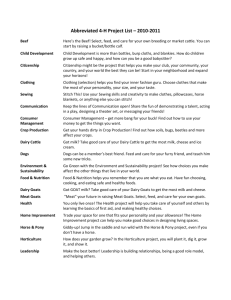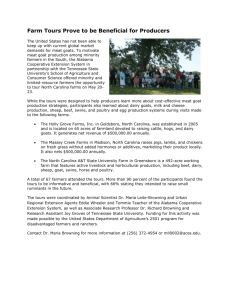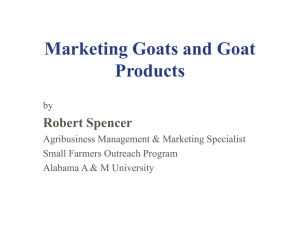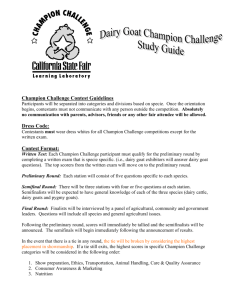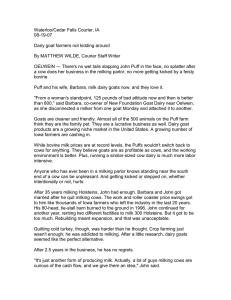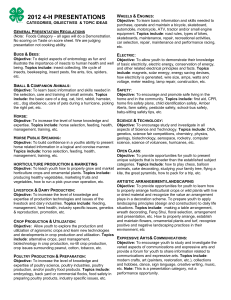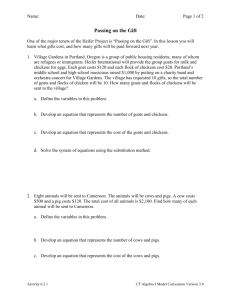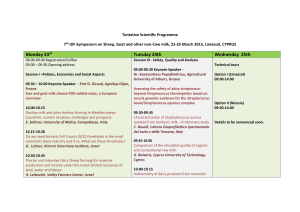Key findings (cont…)
advertisement
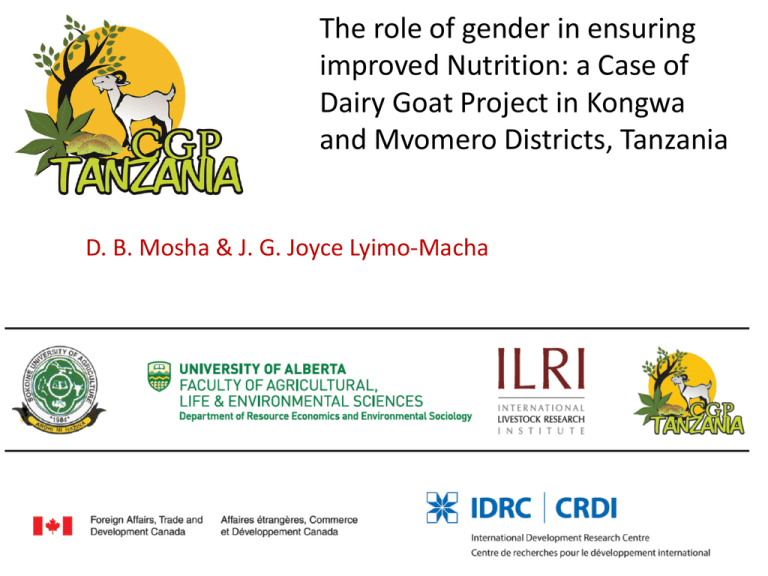
The role of gender in ensuring improved Nutrition: a Case of Dairy Goat Project in Kongwa and Mvomero Districts, Tanzania D. B. Mosha & J. G. Joyce Lyimo-Macha Introduction • Malnutrition is a prevalent challenge in DCs • In Tanzania, about 50% of population live in abject poverty with a poor nutritional status. • In Africa, TZ rank as third worst country with high rate of malnutrition. • The prevalence rate of malnutrition of children under 5 years is still a big problem, with the highest rate in Dodoma and Morogoro regions 2 Introduction cont….. • Women in the two districts do most of HHD and farm works (keeping small ruminants, growing crops, and HHD chores) • They are overworked • Based on these challenges an engendered integrated model of dairy goats and root crop production was introduced (CGP Tanzania project) • With a gender component 3 Project implementation approaches • Baseline survey – MFFDs and WGDs was carried out • Development of gender strategy, • Gender analysis (roles, access, control and decision making) • Gender trainings (men and women, & girls and boys • Training on nutritional education • However, little information on associations between gender roles and improved nutrition. 4 Objective of the Study • To assess gender roles and child nutritional status among project beneficiaries. 5 Methodology • The study was conducted in four villages (two per districts) • 53 HHDs and 57 children were involved, • Data collection tools: – A structured questionnaire which also comprises Harvard analytical framework questions was used , – Key informants interviews, – Anthropometric measurements to assess the NS • Secondary data – from publications and reports • Data were analysed using SPSS 6 Key findings • 126 farmers (64F) were trained on gender issues, • 134 (70F) trained on nutritional education • 41% of the owners of dairy goats are women • Findings from Key informants evident that women ownership of dairy goats is an effect of CGP TZ project interventions • Indicated by 66% women and 34% of men 7 Key findings (cont…) • Productive works are shared, with exception of milking, which is most done by women (78%) in both MHH & FHH, • Sharing of farm activities, give women more time in child caring, preparation of food and feeding. • Women have more access to production resources, moreover less control of these resources. 8 Key findings (cont…) • Increase in women participation in decision making at the HHD level. • In male HDs, where males made the final decisions 14.5% of children were severely stunted and 17.6% were moderately stunted. • Decision making made by males is statistically significant with stunted growth in Kongwa district, but not Mvomero district. 9 Key findings (cont…) • Cultural norms, food taboos, and practices affect child nutritional status as men are favoured and are given good portion of the food. • Prevalence of polygamy, cohabite and divorce was high interfere nutritional status of children: • DC in polygamy is done by male, • Cohabite FHH affected by overloaded roles and responsibilities • The divorce women are denied on their rights to access production resources 10 Key Messages • Women now owned dairy goats • There is availability of goat’s milk in the communities • Women are the one make decision on the use of goat milk and expenditure of income from sell of milk- This increase women autonomy ready to improve and diversified dietary intake at HHD level, • The greater the extend of women’s influence over the allocation of milk and food form the better the child’s dietary intake and nutritional status 11 Conclusion Engendered interventions empower women in agro- pastoral societies Availability and consumption of goat’s milk Supporting women to acquire at least two dairy goats is expected to improve availability of milk for young children 12 Acknowledgements The project acknowledges financial support from IDRC and commitment from farmers, district and research partners 13 Thank You! 14
